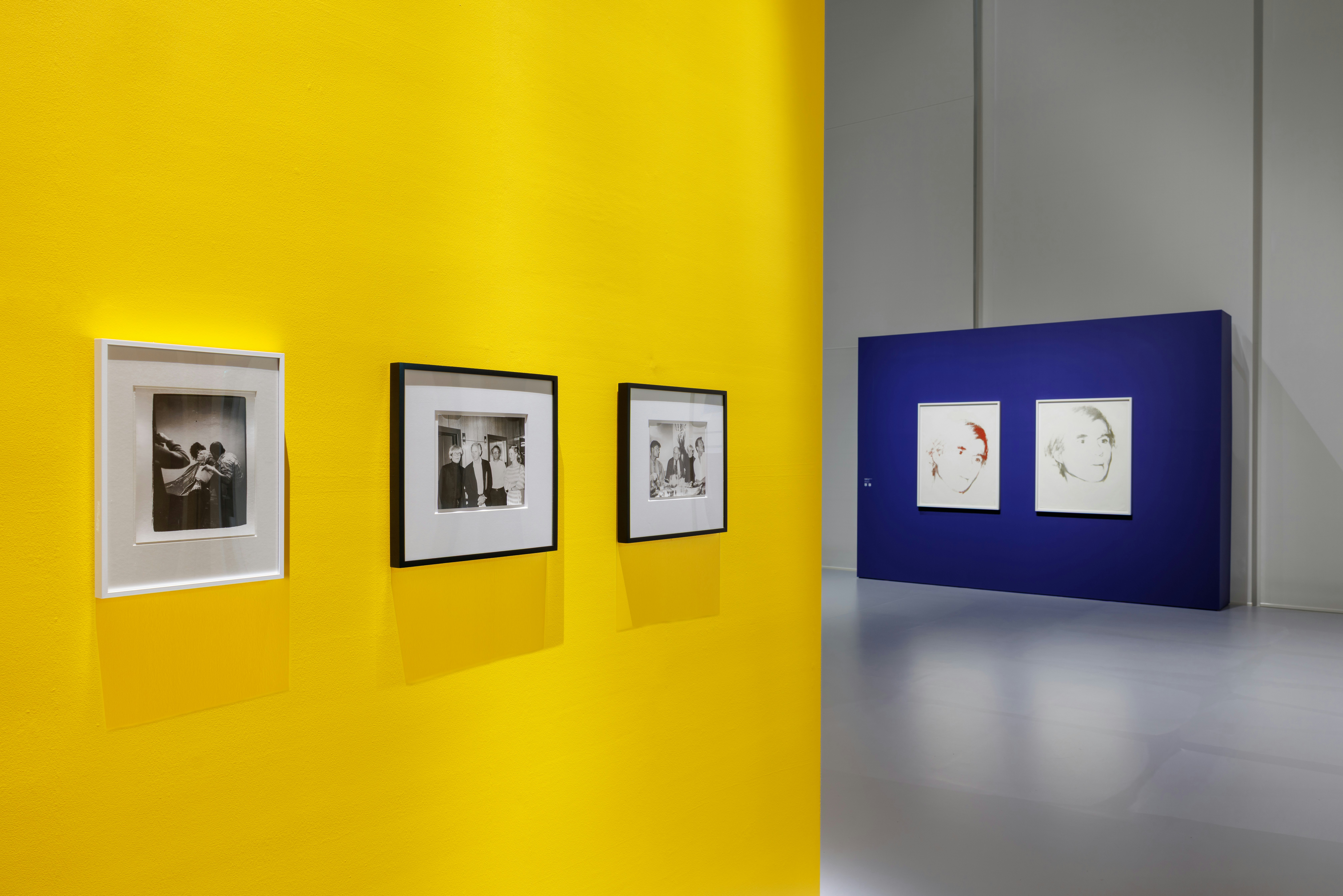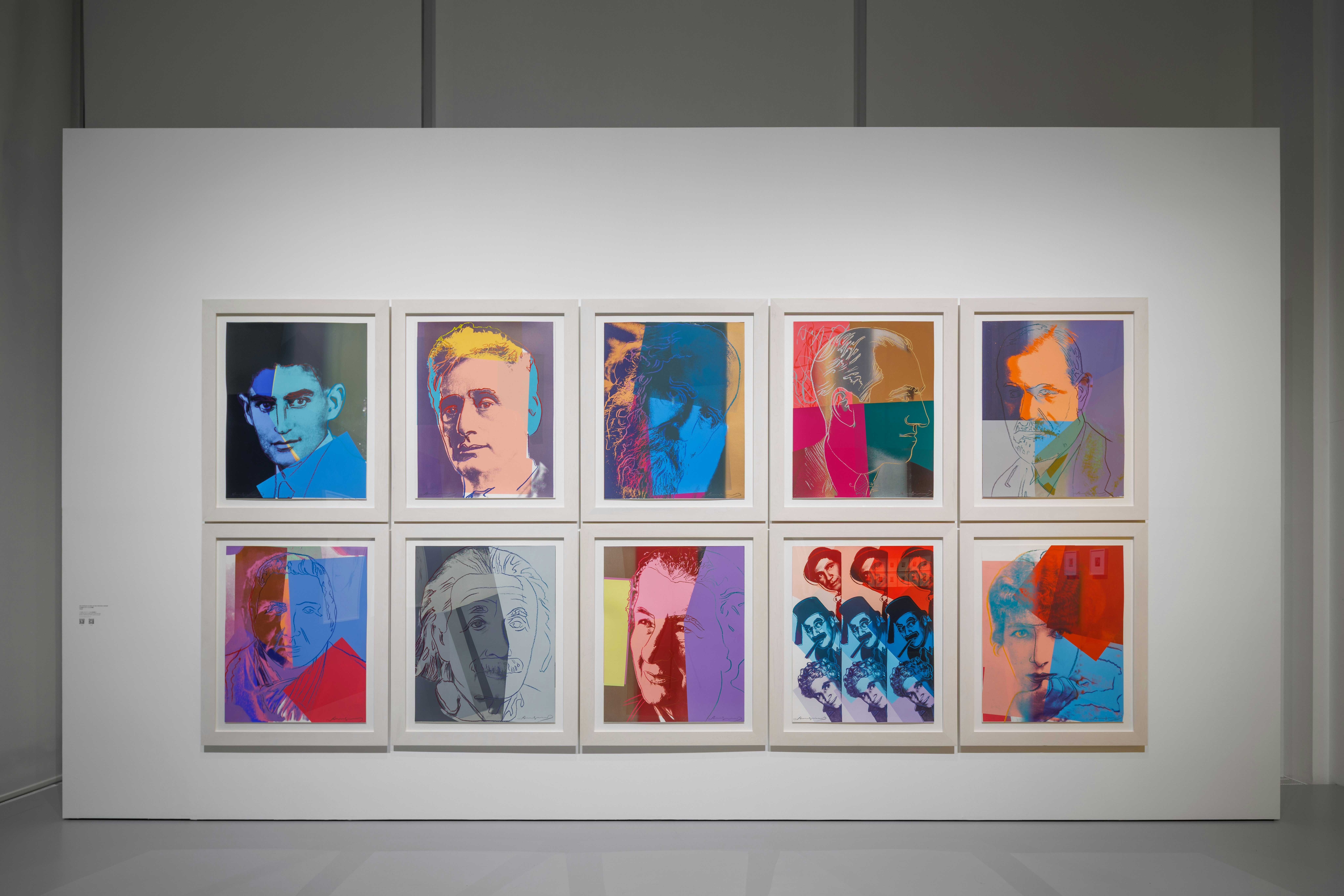Andy Warhol - Serial Portraits
- Date
- From 02.10.2025 to 15.02.2026
- Place
-
Espace Louis Vuitton Tokyo
-
Omotesando Bldg 7F 5-7-5 Jingumae Shibuya-ku
-
Tokyo 150-0001
- Phone
-
+81 3 3515 0855
The Espace Louis Vuitton Tokyo is proud to present Andy Warhol - Serial Portraits, featuring a selection of celebrated and lesser-known works by the iconic American artist.
Andy Warhol was a multifaceted figure, one of Pop Art’s great masters and an extremely prolific artist who worked in New York from 1949, when he started out as advertising illustrator, until his death in 1987. Though perhaps best-known for his colourful, mass-produced silkscreen prints, he was also a film director, music producer, show designer, television host and celebrity magazine editor. As he pursued a variety of career paths, he enjoyed manipulating his own image to create numerous avatars — as evidenced by the silkscreened self-portraits and abundant staged photographs he made throughout his career.

ANDY WITH TECHNICIANS PREPARING LIFE CAST, DAVID HOCKNEY AND TWO UNIDENTIFIED MEN, SELF-PORTRAITS
©The Andy Warhol Foundation for the Visual Arts, Inc. / Licensed by Adagp, Paris 2025 Courtesy of the Fondation Louis Vuitton, Paris Photo credits: Jérémie Souteyrat / Louis Vuitton
Portraiture had always been central to Warhol’s work, from his studies at the Carnegie Institute of Technology in Pittsburgh, Pennsylvania (USA) until his death in New York in 1987. He compulsively sketched, photographed, filmed and silkscreened the people in his entourage, notably movie stars and figures of the high society and art scene. As the decades passed, the images he captured of these innumerable individuals came to form a collective portrait of that day and age.
When he was young, Warhol began collecting newspaper clippings of celebrities and quickly learned the importance of properly “staging” oneself to achieve the greatest media impact. Donning a wig and dark glasses, he created an enigmatic persona that he sought to publicise as much as possible to ensure successful sales of his artwork. He was a master of disguise and masquerade, embodying a wide range of characters in his posed photographs and self-portraits. His “in drag” Polaroids, for which he changed his looks to resemble a woman, as well as the numerous Self-Portraits he created over his career, demonstrate his ability to camouflage his appearance, raising questions about identity and image manipulation.

TEN PORTRAITS OF JEWS OF THE TWENTIETH CENTURY
Exhibition view at Espace Louis Vuitton Tokyo (2025) | ©The Andy Warhol Foundation for the Visual Arts, Inc. / Licensed by Adagp, Paris 2025 Courtesy of the Fondation Louis Vuitton, Paris Photo credits: Jérémie Souteyrat / Louis Vuitton

SELF-PORTRAIT, SELF-PORTRAIT IN FRIGHT WIG, THE SHADOW
Exhibition view at Espace Louis Vuitton Tokyo (2025) | ©The Andy Warhol Foundation for the Visual Arts, Inc. / Licensed by Adagp, Paris 2025 Courtesy of the Fondation Louis Vuitton, Paris Photo credits: Jérémie Souteyrat / Louis Vuitton
From his photo booth Self-Portrait of 1963-64 to 1981’s enigmatic The Shadow, the works assembled here illustrate both the evolution of the artist’s media image and the technical and stylistic development of his artistic practice. His rarely shown drawings of young men, sketched in ballpoint pen in the 1950s, open the exhibition and offer an uncommon glimpse of the expressive, highly personal style that was characteristic of his early advertising illustrations. Though this brilliant mastery of drawing would occasionally resurface as he pursued his art, it would become more discreet in the screenprints to come. This exhibition establishes a common thread connecting the intimate Unidentified Male sketches to the photo booth shots in a dishevelled “fright wig” taken the year before the artist’s death to his 1980s Ten Portraits of Jews of the Twentieth Century, the fruit of a ceaseless exploration of mechanised artistic techniques. From behind his dark glasses, through his silkscreening and use of diverse camera forms, Andy Warhol once again demonstrates his unparalleled capacity for adaptation and innovation.
Andy Warhol
A key figure in Pop Art, Andy Warhol created a character who, investing in cinema, television screens, gay and underground culture, propelled him to the rank of a social icon.
Initially a fashion illustrator, he turned to painting at the end of the 1950s, taking his subjects from the press, comic strips and advertising. In 1962 he began screen-printing, resulting in his Campbell’s Soup series and portraits of the stars (Marilyn Monroe, Elvis Presley, Elisabeth Taylor), endlessly reproducing the same images. These reflect the collective imagination of consumer society, while other series featuring criminals, accidents, electric chairs or Jackie Kennedy in mourning reveal an idealised America shot through with violence, sex and death. In 1964 Warhol opened The Factory, a studio where he produced his paintings and films, a legendary creative space that attracted artists, poets, actors, muses, musicians and collectors. In 1963 his first self-portraits appeared, as well as his Screen Tests, uninterrupted portrait shots lasting several minutes. Then in the 1970s, and especially the 1980s, came portraits commissioned by celebrities. Made directly in photo booths or using a Polaroid Big Shot, these closely framed portraits show their subjects with a fixed gaze, fragile and "petrified", defining a world that is at once contemporary and timeless.


